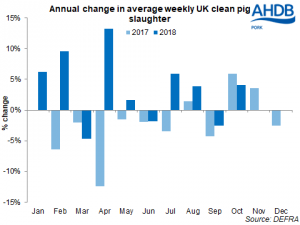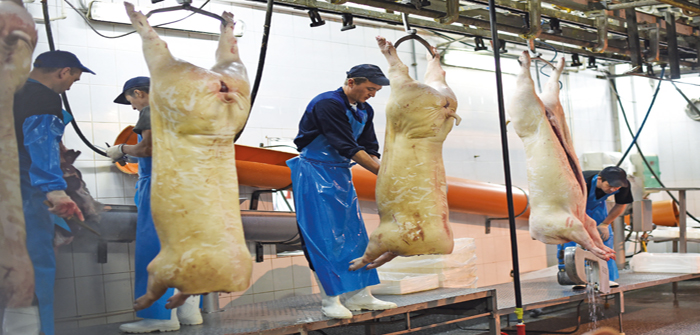Following a decline in September, UK clean pig slaughterings were up over 4%, compared with a year before, in October. According to figures from Defra, 963,000 clean pigs were killed during the month.
Growth was strongest in Scotland, reflecting the fact a major processor was offline at this point last year. In England alone, the increase was just 2%, while in Northern Ireland there was a 1% decline, likely dues to some of the displaced Scottish pigs being slaughtered there last year.
Considering that October contained an extra week day this year, compared to the month in 2017, this theoretically indicates a slower daily slaughter rate this year. However, there are mixed reports of factory breakdowns and Saturday kills both this year and last, so slaughter per working day may not be a fair representation of the market at present.
It remains to be seen the extent to which throughputs pick up over the coming weeks during the key Christmas procurement period. Strong year-on-year growth will be needed to achieve the 3% annual increase anticipated for October-December in the October forecast.

Average clean pig carcase weights during October were 1.5kg lower than in October 2017, at 83.6kg. This dampened supply levels to some extent, although this was partially compensated for by a rise in adult sow and boar cullings, which were 19% above the level a year earlier. Pig meat production was therefore up 3% at 84,000 tonnes.
Sow slaughterings have been generally higher throughout 2018, though this had been largely thought to reflect an unusually low culling rate last year. However, at 24,200 head, the latest month’s figure is outside the normal range and is in fact the highest monthly slaughter since January 2016. This is perhaps the first indication that weakening profitability may start to have an impact on the breeding herd over the coming months.




